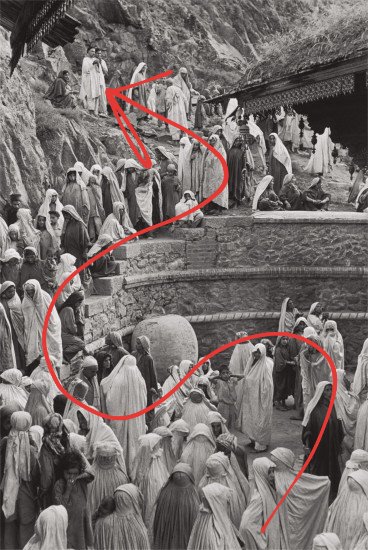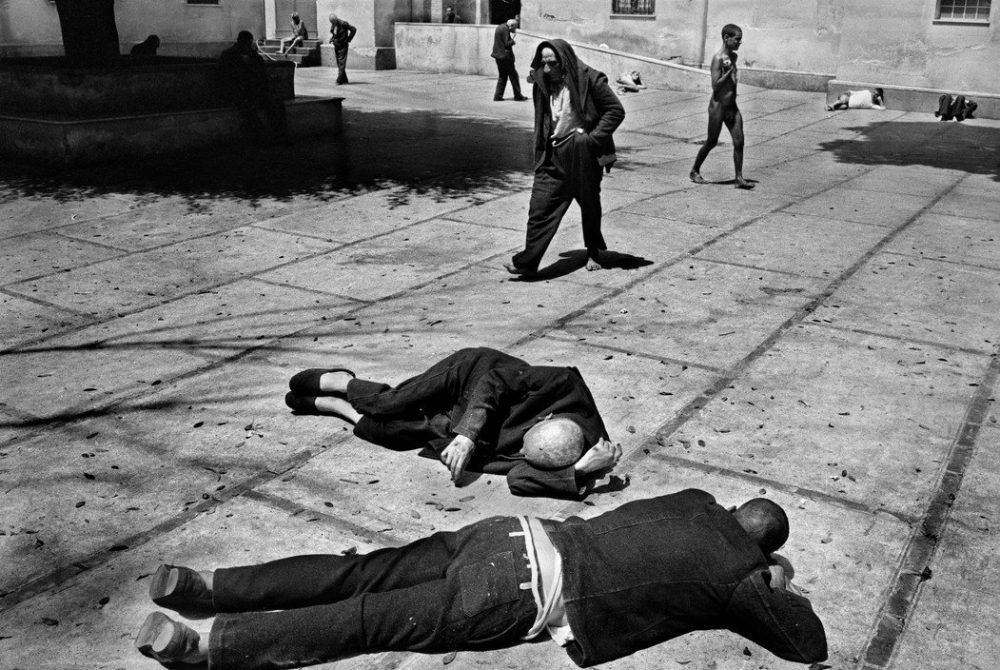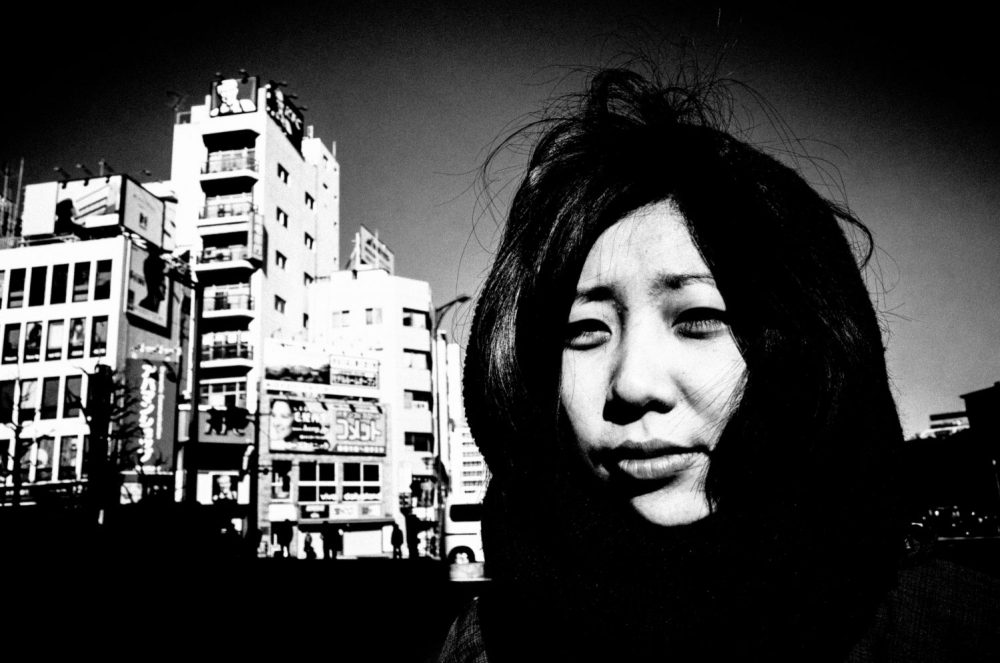Your cart is currently empty!
Street Photography Composition Manual
Dear friend,
This is an attempt (an essay/assay) into making a comprehensive (yet simple) manual to street photography composition. It will be based on my personal experiences, turned into theory.
Let’s begin.
Part I: Introduction to street photography composition
Let us start off with basic principles in street photography composition:
Composition

So the first question is this: what is ‘composition’, and why is it important?

The word ‘composition’ comes from the Latin word: “compositio“, which means:
arrangement, combination, mixture
So to me, ‘composition’ in photography is how you arrange the visual elements in your frame.
Furthermore, when you “compose” a scene– you are combining visual elements to make a photograph. You decide what to include in your frame, and what to exclude.
Content vs Form

Generally if you study the history of visual art, a lot of old-school artists talk about the debate between “content” (what is in the picture) and form (the composition).
For example in photography, the “content” is the person you are photographing, and the “form” is the shapes, lines, and visual elements in the photo.
When photographers like Garry Winogrand said that “…photography is a battle between content and form”, what I think he meant is this:
The dynamic tension, or the battle between content (your subject) and the form (visual elements) is what makes a photograph powerful.
Dynamic composition

The word I want to use to describe composition is “dynamic”.
The word ‘dynamic’ comes from Ancient Greek, which is dunamikós, “powerful”, which goes to the (even more) Ancient Greek “dunamai“, which means, “I am able”).

Without getting too off-topic, I think a “good” composition is dynamic — full of power, energy, movement, active, and full of life.
Why make dynamic compositions?

For myself, I believe there are strong photos and weak photos. I believe that strong photos can be characterized by strong compositions. Weak photos are characterized by weak compositions.
Considering the fact that we defined ‘dynamic’ as being strong– strong compositions are generally simple, yet elegant. Simple in the sense that there are no superfluous distractions. Elegant in the sense that there is dynamic movement in the photograph, which can sometimes be characterized by a tilt, hand/body gestures from the subject, eye-contact from the subject, or dynamic contrast in the photograph (a strong contrast between the dark/lights in the photo).


For myself it is simple– if a photograph doesn’t have a strong composition, it is generally boring to look at. I only want to consume photographs that visually-interest and stimulate me! Because when I study the artwork of others, I want it to be a visual stimulus-aid to help me create more of my own artwork.


Unexpected compositions

In street photography, a strong technique you can use is this:
Make surreal photos that confuse or disorient your viewer — to make them wonder, “What is going on?”
You can often do this by shooting from a very low angle or perspective, which we don’t commonly see in “real life”:


Or we can create a juxtaposition between the subject in the foreground, and what is in the background. Like this juxtaposition between the subject in the foreground and the advertisement of the woman in the background. It makes the viewer wonder:
“What is the relationship between the man and the woman in the photograph?”


Let your photos marinate

It is difficult to know whether you’ve taken a good photo or not, if you immediately look at the photo. Often you need to let your photos sit and “marinate” for a while, before you can determine whether your compositions are strong or weak.
For myself, I know my own photo is good or not based on this:
I know my photograph is strong if I like the photograph more as time goes on.
For example, if I have a photograph that I shot 5 years ago that I still really like now (or appreciate more now), it is a strong photograph.

On the other hand, I have photographs that I once thought were great a year ago, but now I dislike. There are also certain photos that you start to dislike the more and more you look at them. These are weak photos.

But ultimately my suggestion is this:
Disregard whether others like your photos or not. Only consult yourself and ask yourself: “Do I like my own photo?”
If you like the photo, it is a strong photo. If you don’t like the photo, it is a weak photo.

But once again, recognize that time is your ultimate counselor in photography. If you are uncertain whether your photograph is good or not, just wait. Wait a few days, a few weeks, a few months, or even a few years.
If you took a photograph 10 years ago and you still really like it, it is a strong photo, which deserves to be in your portfolio.

Monochrome vs Color

(For now) in photography, we generally have two choices for aesthetics in photography: monochrome or color. Personally, I like both.


I don’t think there is a “better” aesthetic. This is a silly idea– it is like saying that vanilla ice cream is better than chocolate cream. It all comes down to personal taste.




More importantly, you must determine which tastes you like and which tastes you don’t like.
For example, let us consider food. I like really bitter, astringent flavors. I prefer light roast espressos, that are bright and fruity. Others like darker-roast coffees. People who prefer dark-roast coffee aren’t stupid or inferior to me; they simply have different tastes. Because I know what tastes I like, I generally order Ethiopian coffee (when given a choice).

Unfortunately, most people don’t know what they like. Many individuals don’t know what flavors of food they like, what type of coffee they like, or what kind of aesthetic in photos and art they like.


What others like or don’t like isn’t our concern. Our concern is to know which aesthetics for our own photos we prefer.
So ask yourself — what kind of photos do you like to look at? High contrast color photos? Low contrast color photos? High contrast black and white photos? Grainy and gritty film photos? Or smoother and more muted colors?





For myself, I like high contrast, grit and grain. I like punchy photos, that give me a visual punch-to-the-face. Not everyone likes this aesthetic, but I like it!




Once again, it isn’t our concern whether others like our aesthetic or not; what matters is whether we like our own aesthetic or not.




Golden Triangle Composition

Probably the best compositional tool I’ve learned is the ‘golden triangle‘ composition. The basic concept is this:
Don’t center your subject. Put your subject a little to the far left or the far right — having your subject leaning into the center of the frame, or out of the frame.



Why is this compositional technique strong and dynamic?
Well, the diagonal line is one of the strongest lines we have– that adds the most dynamic movement. Furthermore, when you have a subject about to exit the frame, it feels more dramatic.
Sub-divide the frame

Another simple way to look for when you’re shooting on the streets– look for rectangles inside rectangles:

Layers

Also, if you want to add more depth to your photographs, shoot layers. This means, make a photograph that has subjects close to you and far away. Subjects in the foreground, middle-ground, and background:


The difficult thing about shooting layers in street photography is this: simplifying your scene. An easy way to simplify your scene is to stack visual elements on top of one another, to compress your scene:


Leading lines

Another effective technique: find a simple scene with leading lines, and wait for your subject to enter the frame, preferably where the leading lines are pointing to:

Triangle composition

A good way to add dynamism to your photo compositions– try to create a triangle by connecting 3 different visual elements in your frame, in the shape of a triangle. Sometimes you notice this when you’re shooting, and sometimes you will discover the triangle composition after you’ve shot it.

Fishing technique

Another simple street photography composition technique is the ‘fishing technique‘. The basic idea: find an interesting background, and wait for your subject to enter the frame. You can use a flash to freeze the motion of your subject, make sharp photos, and also create strong contrast and dynamism to your photo:

Fill the frame

I generally recommend shooting with a prime (non-zoom) lens in street photography: a fixed focal length, such as a 24mm, 28mm, or a 35mm lens. The simple concept to ‘fill the frame’ is to use your “foot zoom” (your feet) to walk closer to your subject and scene, to fill your frame with interesting visual elements!

When you see an interesting scene, don’t just take 1-2 photos and run away. Rather, keep your feet planted, and be patient– sometimes even more interesting things or people will enter the frame!


Minimalism

Less is often more. Try to simplify your scene as much as possible, cutting away as much superfluous fat as you can.

To do this, just start off with a very simple background (just one single color or tone), and just wait for your subjects to enter the frame.


Hand gestures

To me a photograph without emotion is dead. One of the easiest ways to evoke emotion in your photos is to capture hand-gestures in your photographs.

Or when you’re shooting on the streets, and you see an interesting hand-gesture (like a thumbs up), get close and start clicking!


Street corners

If you want to make more dynamic and interesting compositions, find busy intersections on the street, and wait for your subjects to come to you! You can experiment shooting during sunset, and shooting at -1 or -2 exposure-compensation, to make the darks/shadows very dark, and to light up your subjects.

Cutoff technique

If you see someone interesting you want to photograph and you want more dynamic photos, you must shoot head-on. To shoot head-on, try the ‘cutoff technique‘. The basic idea is this: as someone is walking, walk slowly on the side, and at the last moment, cut in front of their walking path, and take a photograph head-on.

Dutch angle

Another effective tip to make more dynamic street photographs: use the ‘dutch angle‘ (which means, tilt your camera to the left or right when you’re shooting). This is a cinema technique a lot of film noir directors used, to heighten the drama of a scene.

Focus on the background

Another principle: to add more depth and interest/intrigue to your photos, don’t always focus on the subject closest to you. Rather, focus on what is furthest away in the scene. If you’re using ‘zone focusing‘, this means to shoot at f/8, ISO 1600, and set your manual-focus to around 5 meters. If you shoot autofocus, set your focusing point to the background.

Part II. Masters of Composition
To study composition, I suggest studying the work of the master photographers from the past, and deconstructing their compositions, to better understand why you like them, why they are dynamic, and try to figure out how you can incorporate their techniques/imagery to your own photos.
1. Henri Cartier-Bresson
Henri Cartier-Bresson is the master of composition in street photography. Start off by studying his work.


































More Henri Cartier-Bresson compositions:











































2. Josef Koudelka
The next master to study: Josef Koudelka. Study his elegant, dynamic, and timeless photos:






















































3. Sergio Larrain
Next, let us study the work of Sergio Larrain, a contemporary of Henri Cartier-Bresson:

























4. Eric Kim Compositions
Some of my compositions:










Some of my black and white compositions:









































Never stop composing

Find inspiration in composition anywhere and everywhere. For example, some examples from ‘projective geometry‘ I’ve been studying:


































Or study cinema to find great compositions. For example, some screenshots from the film ‘Battleship Potemkin‘ from the 1920’s:

































































Or even classic Renaissance art– like the paintings of Raphael:

































Conclusion

Composition will be a life-long obsession for you. Keep it interesting, fun, and never run out of inspiration to shoot!


ERIC